Touring ancient ruins with kids can sometimes be a hard sell. After all, crumbling skeletal remains of buildings with relatively no discernible shape does not offer that much intrigue, even for adults. The kids might stick with you for a minute, hoping to use those piles of rocks as a great outdoor playground. But, when you add the final insult that climbing on ancient ruins is frowned upon mightily, you have just become the reluctant captain of rapidly sinking ship.
Creative storytelling is the key to getting kids involved in touring and enjoying ancient ruins, and there is no other ancient site that offers tales filled with such gruesome deliciousness as ancient Mycenae. The ancient citadel is located about 90 miles from Athens, and is the birthplace of such epic tales as the Trojan War, the tasks of Hercules, and the tragic life and death of Agamemnon. Add to that, the dark tombs and wells that can only be explored by the few brave souls outfitted with flashlights, and you have an exciting adventure on your hands.
Entering the Ancient Site
Once you have parked and paid, you will begin an interminable climb to the top of the Acropolis. Plan for this to be fairly slow going, as it is a steep grade. It is best to bring plenty of water and even an umbrella. There is little shade and no facilities as you make your climb to the top. As you begin to climb, you will see Grave Circle B on your right, as well as the two circular tombs of Clytemnestra and Aegisthus. You can use this time to give a brief history of the Mycenaeans . The Mycenaens were the ruling civilization of the bronze age of Greece and gave rise to the time period known as the age of heroes. They were masters at conquering the unforgiving terrain of the Greek isles and deftly subdued the cultures around them with their mighty citadels.
Lions Gate and Cyclopean Walls
Just about the time you start to sound like a dusty textbook, you come face to face with the good stuff. And by good, I mean the giant, overpoweringly mind boggling Lion's Gate and Cyclopean walls. The fortified city is entered through the aptly named Lions Gate. Two lionesses (now headless) are carved into the rock above the doorway, and attached to walls created with stones of such great size that they were fabled to have been placed by the Cyclops. The sheer size of these stones, each over five feet tall, is impressive, especially for children who will be dwarfed by each stone. More impressive is the overall size of the wall. The width of the wall in some places is so wide that it could easily serve as a two lane highway. Looking up and marveling at a feat of engineering that occurred without modern machinery, it is easier to believe that a one eyed giant was the architect. Most likely, it was a vast team of oxen and a conglomeration of pulleys and slides that completed the task, but the giant story is much cooler.
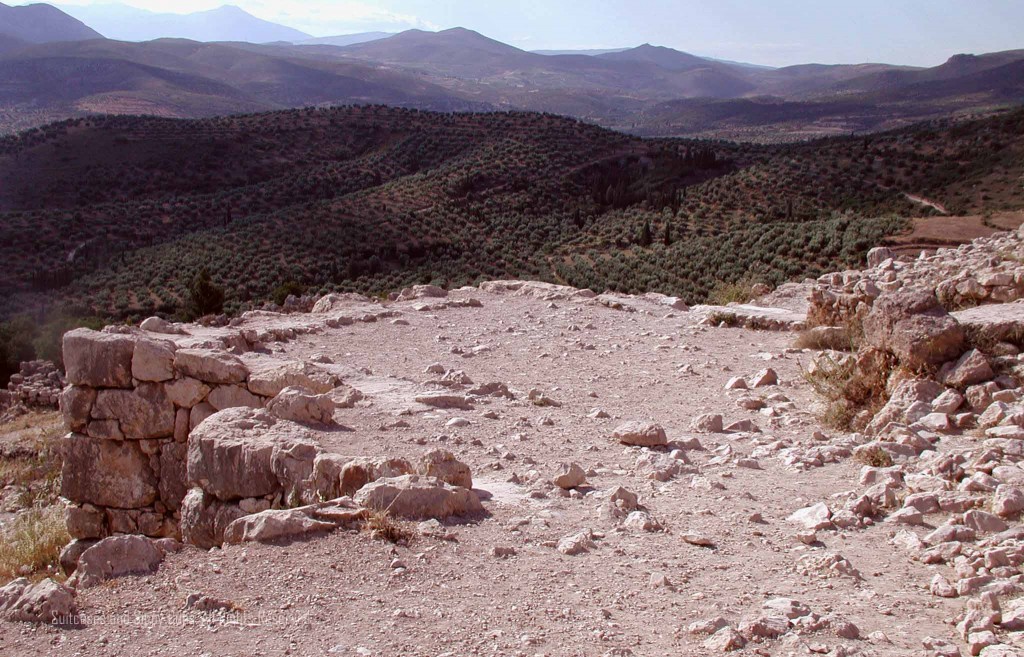 No, it's not a pile of rocks, it's the window of the palace.
No, it's not a pile of rocks, it's the window of the palace.
Acropolis and Palace Ruins
The climb to the top of the acropolis is the perfect opportunity to casually throw out some facts about the citadel. The Mycenaeans had a decisive advantage over their attackers because of their lofty perch. This height advantage also made it easier to collect fresh rainwater for drinking. With any luck, the kids will be too out of breath to interrupt, which will give you an opportunity to tell them to thank their lucky stars that they don't live in Mycenae or they would have to make this hike every day.
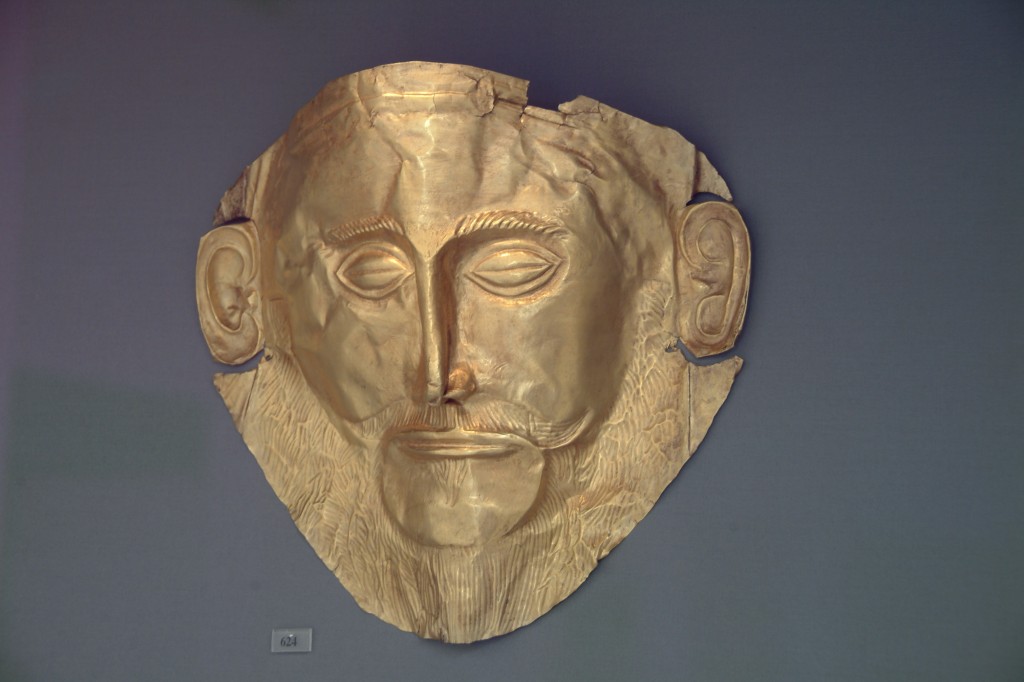 The Mask of Agamemnon~Discovered in Grave Circle A, but not actually belonging to the famous king.
The Mask of Agamemnon~Discovered in Grave Circle A, but not actually belonging to the famous king.
There is virtually nothing left of the ruins of the palace of Agamemnon, but don't let that stop you from retelling the juicy details of his tragic life and death. Agamemnon was the king of Mycenae and the reigning hero of the Trojan War. After winning the war, which included the sacrifice of his daughter for the favor of the gods, Agamemnon returned home with the spoils of war, which included a Princess concubine. Agamemnon returned to his throne to find that his wife had also found a new love and together they took the life of Agamemnon. The queen and her lover ruled Mycenae for a brief time before Agamemnon's son avenged his father's murder by killing the queen. I'm realizing now that I may need to return my mom of the year award for telling this story to my kids, but they loved it.
Age appropriateness aside, larger than life storytelling helped transform a mountainous pile of rubble into a captivating exploration. Of course, I had help from perhaps the greatest storytellers of all time. Modern day soap opera writers have nothing on the ancient Greek poets. Those guys could twist a plot and write a cliffhanger that would keep you coming back for more, even after two millennia.
Part Two of Touring Mycenae with Children
It's not all sunshine in the state of Mycenae. Check out what happens when we wake up a grumpy toddler and try to make him climb to the top of a citadel.
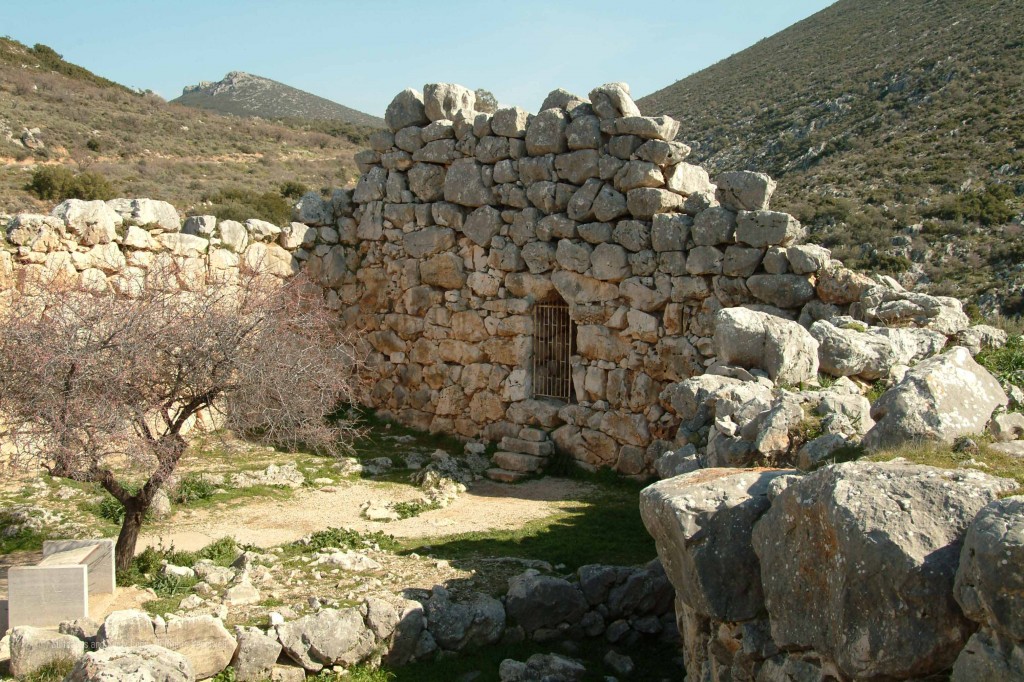
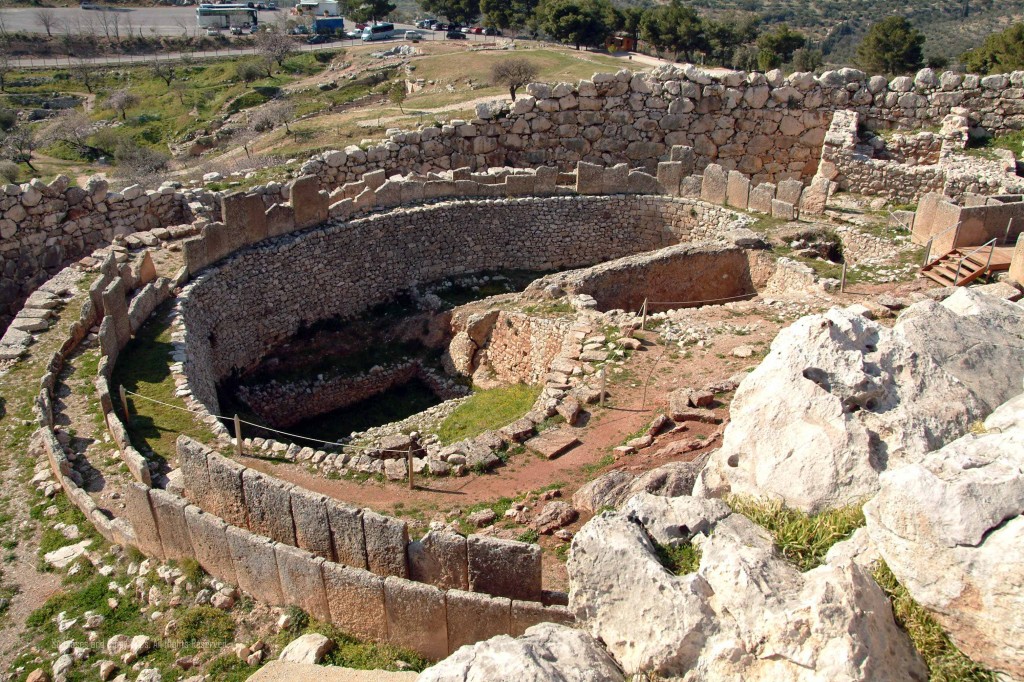
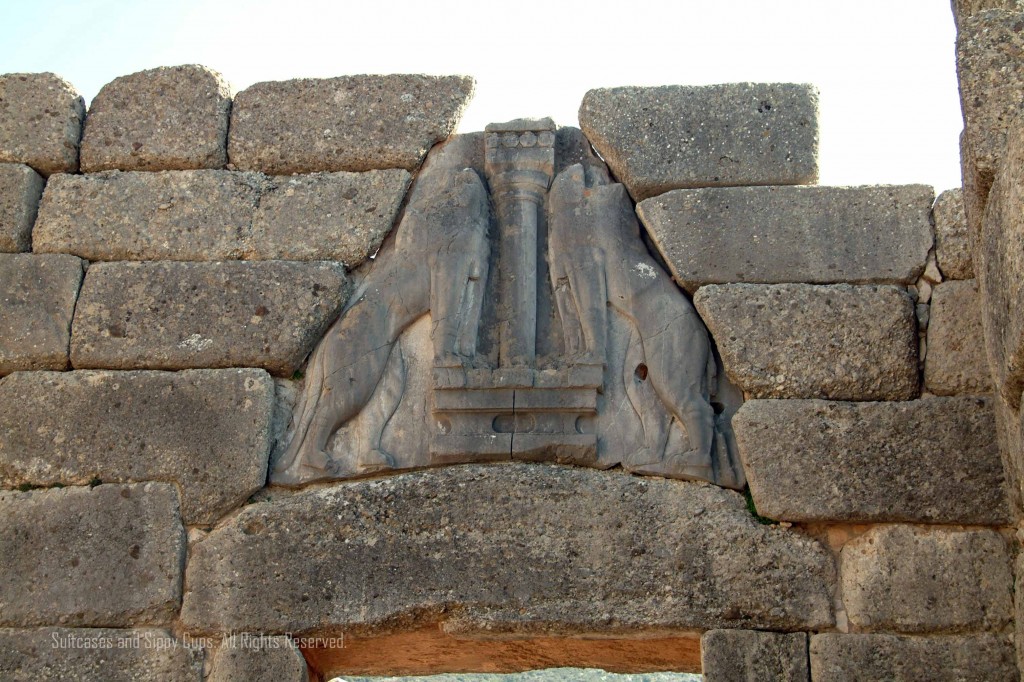
This is on our list to do before we leave Europe for good! I’ll have to remember to come back and brush up before going there!
Wow! You certainly do travel a lot! New GFC follower, Stopping by to say hello from the Meet Me Monday Blog Hop.
Mycenae looks so cool! You’re bang on about the importance of telling a story to keep the kids interested in the ruins. Knowing the back story will spark their imagination and bring the site to life so that it becomes much more than a pile of rocks. I’d forgotten how much fun Greek mythology was until Emma and I started reading prior to our recent trip. She now has a bit of an obsession with Greek gods but it kept her keen as we visited ruins in Italy, Greece and Turkey!
Seriously, when does your guidebook arrive at my door with all these little juicy bits of goodness for me to tell my kid I thought of all on my own? 😉 I think we will just tag along with you next time you leave the country. I can’t wait for Part Two!